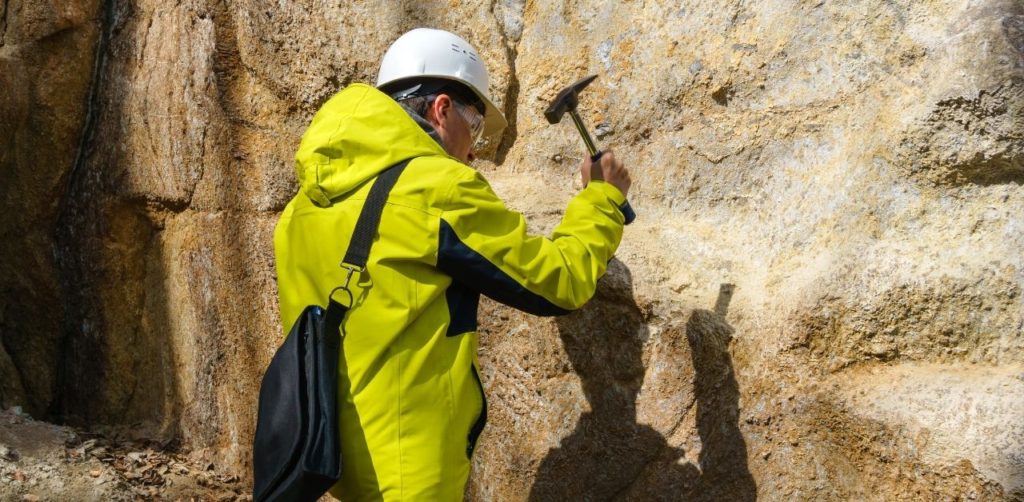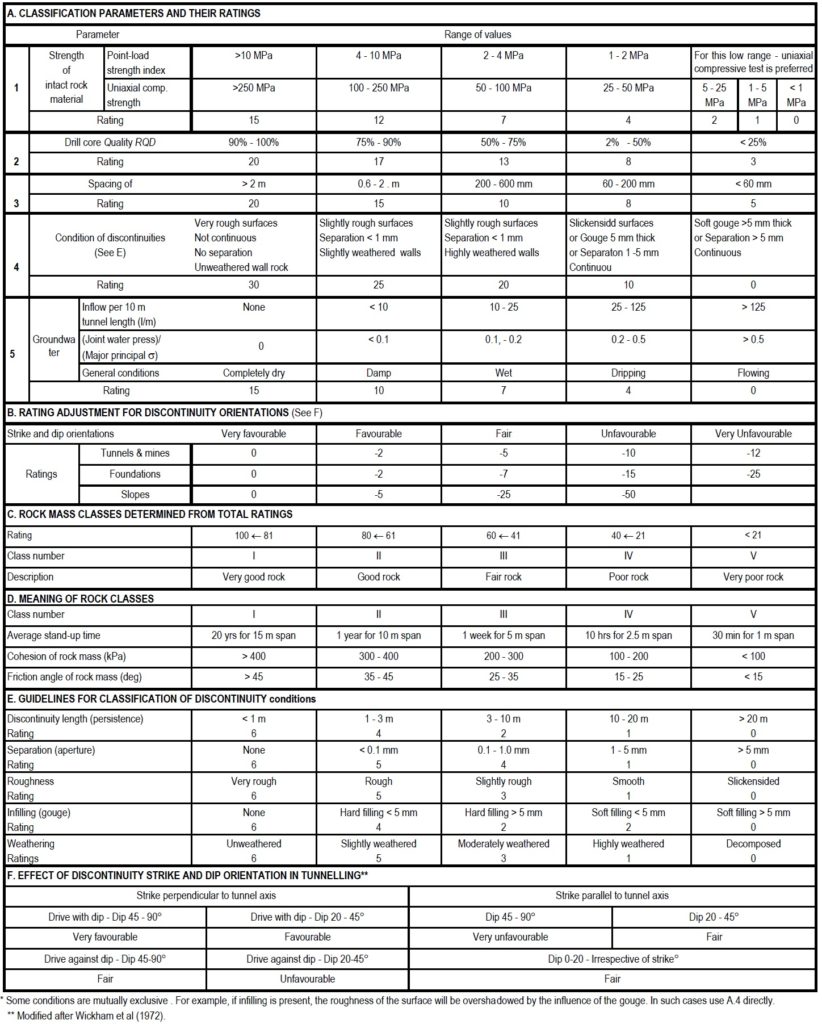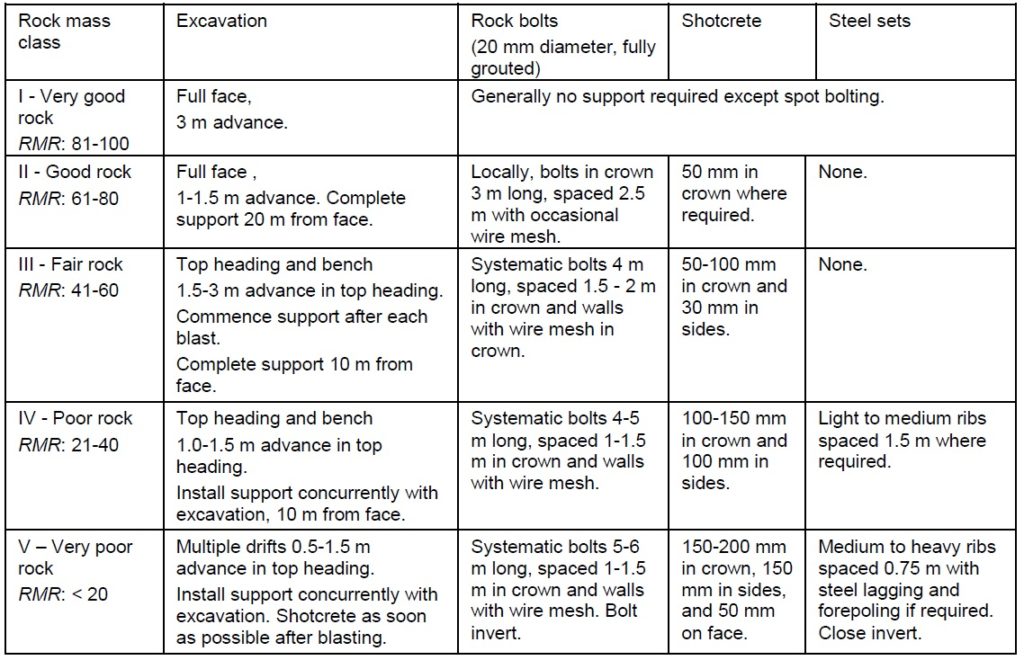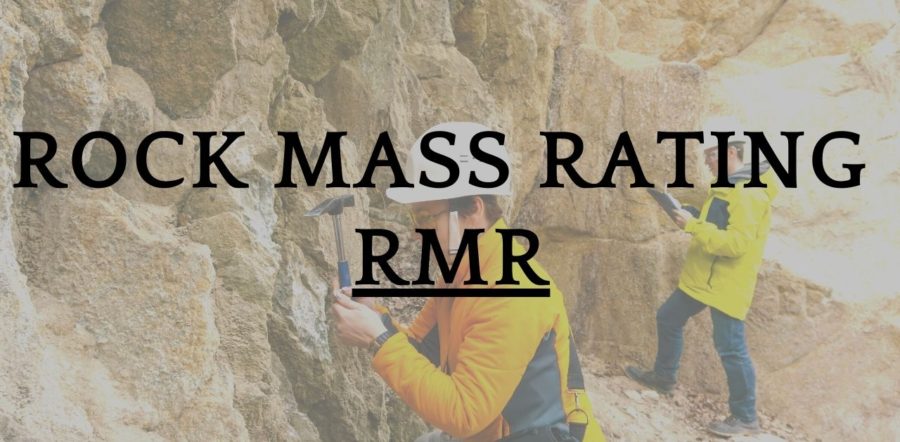What Is Rock Mass Rating?
Rock Mass Rating (RMR) is a numerical scale developed in the early 1970s to evaluate the strength of rock masses. It is widely used by geotechnical engineers and mining companies to assess the stability of rock slopes and underground excavations. The RMR system takes into account several factors such as rock quality, discontinuities, joint spacing, and weathering effects. It provides a quantitative measure of rock mass strength that can be used to make decisions about design parameters for tunnels, mines, foundations, and other civil engineering projects.

Rock Mass Rating (RMR) is a numerical scale that is used to evaluate the engineering properties of rock masses. It is widely used in the geotechnical engineering field to determine the strength and stability of rock masses, and can be used to assess tunneling conditions, slope stability, and foundation design.
RMR is also used in mining operations to determine how much excavation or blasting needs to be done in order to reach a desired mineral deposit. It can also help engineers make decisions about the best way to excavate or drill through a particular rock formation.
Who calculates the Rock mass rating?
RMR is calculated by geological/geotechnical engineers based on several parameters such as joint spacing, weathering, and rock strength. The RMR value helps engineers determine the suitability of a rock for various engineering projects such as tunnels, dams, and mines. It also helps them decide which type of support systems should be used in order to ensure the stability of these structures.
How Do You Calculate It?
The following six parameters are used to classify a rock mass using the RMR system:
1. Uniaxial compressive strength of rock material.
2. Rock Quality Designation (RQD).
3. Spacing of discontinuities.
4. Condition of discontinuities.
5. Groundwater conditions.
6. Orientation of discontinuities.
The Rock Mass Rating system is presented in Table, giving the ratings for each of the six parameters listed above. These ratings are summed to give a value of RMR. The following example illustrates the use of these tables to arrive at an RMR value.
A tunnel is to be driven through slightly weathered granite with a dominant joint set dipping at 60o against the direction of the drive. Index testing and logging of diamond drilled core give typical Point-load strength index values of 8 MPa and average RQD values of 70%. The slightly rough and slightly weathered joints with a separation of < 1 mm, are spaced at 300 mm. Tunnelling conditions are anticipated to be wet.


Note 1. For slightly rough and altered discontinuity surfaces with a separation of < 1 mm, Table. A.4 gives a rating of 25. When more detailed information is available, Table.E can be used to obtain a more refined rating. Hence, in this case, the rating is the sum of: 4 (1-3 m discontinuity length), 4 (separation 0.1-1.0 mm), 3 (slightly rough), 6 (no infilling) and 5 (slightly weathered) = 22. Note 2. Table.F gives a description of ‘Fair’ for the conditions assumed where the tunnel is to be driven against the dip of a set of joints dipping at 60o. Using this description for ‘Tunnels and Mines’ in Table.B gives an adjustment rating of -5.
Bieniawski (1989) published a set of guidelines for the selection of support in tunnels in rock for which the value of RMR has been determined. These guidelines are reproduced in Table. Note that these guidelines have been published for a 10 m span horseshoe shaped tunnel, constructed using drill and blast methods, in a rock mass subjected to a vertical stress < 25 MPa (equivalent to a depth below surface of <900 m). For the case considered earlier, with RMR = 59, Table suggests that a tunnel could be excavated by top heading and bench, with a 1.5 to 3 m advance in the top heading. Support should be installed after each blast and the support should be placed at a maximum distance of 10 m from the face. Systematic rock bolting, using 4 m long 20 mm diameter fully grouted bolts spaced at 1.5 to 2 m in the crown and walls, is recommended.
Wire mesh, with 50 to 100 mm of shotcrete for the crown and 30 mm of shotcrete for the walls, is recommended. The value of RMR of 59 indicates that the rock mass is on the boundary between the ‘Fair rock’ and ‘Good rock’ categories. In the initial stages of design and construction, it is advisable to utilise the support suggested for fair rock. If the construction is progressing well with no stability problems, and the support is performing very well, then it should be possible to gradually reduce the support requirements to those indicated for a good rock mass. In addition, if the excavation is required to be stable for a short amount of time, then it is advisable to try the less expensive and extensive support suggested for good rock. However, if the rock mass surrounding the excavation is expected to undergo large mining induced stress changes, then more substantial support appropriate for fair rock should be installed. This example indicates that a great deal of judgement is needed in the application of rock mass classification to support design.

It should be noted that Table has not had a major revision since 1973. In many mining and civil engineering applications, steel fibre reinforced shotcrete may be considered in place of wire mesh and shotcrete.
Mobile app for calculation RMR
Mobile app (RMR) provides an easy way to measure rock mass rating. The mobile app also enables users to store data securely, making it easier for them to access and analyze this data whenever they need it. The app is available for Android device.
https://play.google.com/store/apps/details?id=ba.engineeringeology.rmr&pli=1
Conclusion
Rock Mass Rating (RMR) is an important tool used to assess the quality of rock masses. This rating system helps to identify and classify the physical features of rock mass for engineering purposes. It is used in various engineering fields such as mining, tunneling, and geotechnical engineering. The RMR rating system provides a quantitative measure of the strength and stability of a rock mass, helping engineers make informed decisions about their projects. It also helps to identify potential safety issues that could arise due to unexpected changes in rock properties or weak spots in a given site. By understanding the RMR rating of a particular site, engineers can determine the best course of action for their projects and ensure that they are working safely and efficiently.

